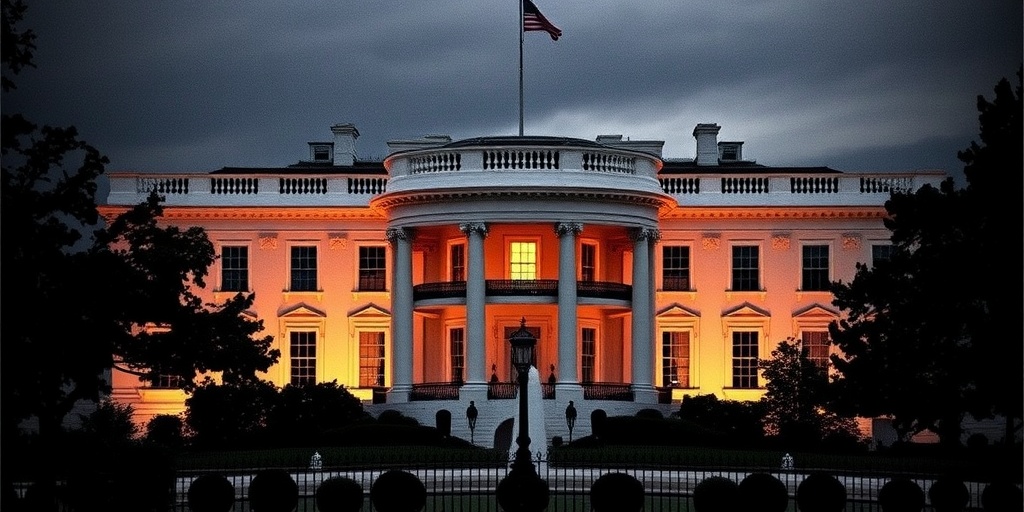Now Reading: Tariffs Could Heavily Impact Consumers, Estimates Show
-
01
Tariffs Could Heavily Impact Consumers, Estimates Show
Tariffs Could Heavily Impact Consumers, Estimates Show

Title: Analyzing the Contradictions of Trump’s Tariff Policy
President Donald Trump has consistently argued that his administration’s tariffs are designed to encourage American manufacturers to relocate production back to the United States. He maintains that by producing goods domestically, companies can avoid the tariffs imposed on imports, thereby creating jobs and revitalizing the American manufacturing sector. However, recent revenue projections from his administration raise questions about whether these tariffs will achieve their intended purposes or if they may instead burden consumers.
Peter Navarro, a senior trade adviser to Trump, revealed in a recent interview with Fox News that the ambitious tariffs set to be implemented could generate approximately $6 trillion in revenue over the next decade. He asserted that these funds would be allocated to support what he described as "the biggest tax cut in American history for the middle class." While Navarro confidently claimed that the financial burden of these tariffs would not fall on American consumers, experts warn that this stance may overlook significant implications of the tariff strategy.
Trade experts highlight a fundamental contradiction in the administration’s tariff approach: using tariffs to generate substantial revenue inherently conflicts with the rationale for encouraging domestic production. To achieve the revenue projections suggested by Navarro, American consumers would need to continue purchasing considerable volumes of imported goods. If tariffs succeed in discouraging imports by making them more expensive, the intended revenue from these tariffs will inevitably decline.
In addition to raising revenues, Navarro stated that the administration aims to reduce costs for American consumers, specifically by targeting lower gas prices through increased domestic oil production. He emphasized the administration’s belief that tariffs contribute positively to the economy, asserting that "tariffs are tax cuts, tariffs are jobs, tariffs are national security." With these statements, Navarro painted an optimistic picture of the benefits of tariffs.
However, President Trump is expected to announce new global tariffs this week, raising concerns over their broader economic impacts. Currently, the U.S. government generates around $2 trillion from individual and corporate income taxes. In comparison, the U.S. imported approximately $4 trillion worth of goods in 2024, suggesting that the necessary tariffs to completely replace income tax revenue would need to be exceptionally high.
Research conducted by economists at the Peterson Institute for International Economics indicates that tariff revenues could peak at around $780 billion annually if a uniform tariff rate of 50 percent were applied to all imports. Nonetheless, such revenue levels would be unsustainable, as excessive tariffs often lead to decreased consumption of imported products, ultimately reducing revenue over time.
Furthermore, estimates from the Yale Budget Lab suggest that the impending auto tariffs could generate between $600 billion and $650 billion in revenue between 2026 and 2035. However, the associated costs of these tariffs would disproportionately affect consumers. According to the analysis, U.S. vehicle prices could rise by an average of 13.5 percent due to tariffs, equating to an additional cost of approximately $6,400 for a new car in 2024. This increase would result in an average additional expense of $500 to $600 for each American household, raising serious concerns about the overall affordability of goods in the economy.
As Trump campaigned on the platform of alleviating inflation that emerged during the Biden administration, the implications of his tariff policy present a complex narrative. Navarro remains steadfast in his belief that tariffs will foster price stability and renewed economic prosperity, repeating his calls for Americans to "trust in Trump."
The administration’s tariff strategy appears fraught with challenges, as experts emphasize the importance of balancing the desired outcomes of economic growth, job creation, and consumer affordability. As new tariffs are introduced, it will be crucial to monitor their impact on American households, businesses, and the broader economy. Ultimately, the effectiveness of these tariffs in reshaping the U.S. manufacturing landscape and generating revenue remains to be seen. Will they achieve the intended goals, or will they exacerbate existing economic strains? The coming months will provide insight into the real effects of Trump’s tariff policies and their implications for the future of American trade and industry.
Stay Informed With the Latest & Most Important News
Previous Post
Next Post
-
 01New technology breakthrough has everyone talking right now
01New technology breakthrough has everyone talking right now -
 02Unbelievable life hack everyone needs to try today
02Unbelievable life hack everyone needs to try today -
 03Fascinating discovery found buried deep beneath the ocean
03Fascinating discovery found buried deep beneath the ocean -
 04Man invents genius device that solves everyday problems
04Man invents genius device that solves everyday problems -
 05Shocking discovery that changes what we know forever
05Shocking discovery that changes what we know forever -
 06Internet goes wild over celebrity’s unexpected fashion choice
06Internet goes wild over celebrity’s unexpected fashion choice -
 07Rare animal sighting stuns scientists and wildlife lovers
07Rare animal sighting stuns scientists and wildlife lovers





















